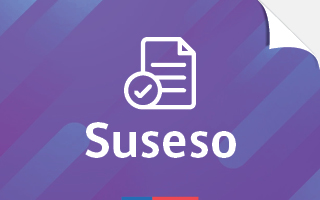Writ of Attachment Law Def
In order to get a seizure order – as with any form of judicial protection – you must first bring a civil action before a court is authorized to act on your behalf. This requires filing and serving a complaint to collect debts owed to you or your business. After or at the same time as these steps, you can initiate proceedings to obtain a seizure order, which usually requires a court hearing. A seizure order claims the creditor`s assets before the outcome of a trial or judgment, while an enforcement order orders law enforcement authorities to begin the transfer of ownership following the conclusion of a court decision. There are several types of attachments, including seizure, sequestration and replevin. The declaration is generally limited to enforcement in the state in which the district court is held, unless it is extended by a law, rule or order of the federal court. U.S. employee The district court or bankruptcy court issues a sealed declaration of claim at the request of a party by order of a judge. Seizure can also be a provisional remedy, i.e. a remedy that temporarily offers the applicant some security while seeking a final judgment on the application.
For example, a plaintiff who has good reason to believe that the person he is suing is about to pack up and leave the state will want the court to prevent this from happening until the plaintiff has a chance to win the case and recover the judgment. The plaintiff may apply for a Preservation Order that places the property in the custody of the court and deprives the defendant of the right to remove or dispose of it. The seizure order deals with court-approved seizures of the defendant`s property at the commencement of a case to ensure that the plaintiff can recover reasonable damages. To obtain a seizure order, a plaintiff must meet certain requirements and the court must ensure that the defendant`s protection is protected by due process. If the requirements are met, the court orders a garnishment that allows a sheriff or marshal to seize property or place a lien on property until the case is completed. If the plaintiff wins, the property is used to pay damages to the plaintiff. Often, plaintiffs must file a deposit if the plaintiff loses and the defendant is harmed by the attachment order. A seizure order is a court order to “seize” or seize property. [1] It is issued by a court to a law enforcement officer or sheriff. The seizure order is made in order to comply with a court judgment. Originally, the main purpose of seizure was to compel a defendant to appear in court and respond to the plaintiff`s request.
The court order pressured the sheriff to take custody of the defendant`s property and deprived the person of the right to use or sell it. If the defendant stubbornly refused to appear, the property could be sold by the court to settle a monetary judgment against him. Today, the seizure process has two functions, as a judicial predicate and as a provisional remedy. The document by which a court orders such seizure may be called an attachment order or seizure order. In addition, the applicant must prove the probable validity of the application, the seizure must have no other purpose than recovery and the amount of the seizure must be greater than zero. Not all types of property belonging to the defendant are seizable. A state`s laws may provide exceptions for certain household items, clothing, tools, and other essential items. The defendant`s salary may be garnished, but a certain amount is exempted to allow for personal maintenance or family support.
Property that belongs to the defendant but is in the hands of another person, such as: Wages owed or an unpaid debt can also be attached, but this procedure is usually referred to as seizure rather than seizure. The benefits of the attachment order include obtaining a secure position that takes precedence over the unsecured creditors and a final enforceable judgment on the property. In addition, obtaining a seizure order can help move a settlement forward. U.S. Marshal serves a declaration in accordance with the instructions contained therein and in accordance with state law governing seizure proceedings. The claimant may be ordered to provide security of compensation and advance payment to cover the estimated expenses of the US Marshal. The requesting party should accompany the United States. Marshal in the execution of the application in case questions arise during the execution. n. the seizure of money or property prior to a court judgment, since the plaintiff will win in court (usually in simple cases of money owed) and needs the money or property to cover (satisfy) the judgment. The Supreme Court has ruled that an attachment can only be made after a hearing before a judge, during which both parties can invoke the risk that the defendant may leave the territory or avoid probable payment.
A garnishment may be authorized by court order without both parties being present, based on a statement by the party requesting the seizure that there is clear evidence that the defendant will abscond. The court must also require bail to cover the defendant`s injury if seizure proves unnecessary.




